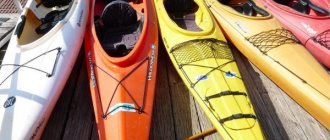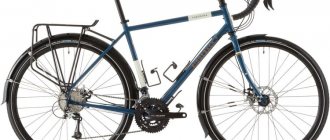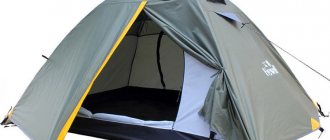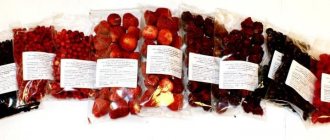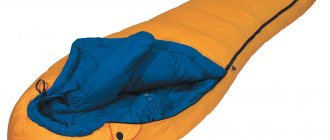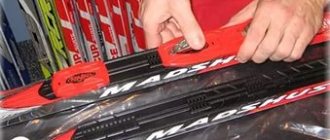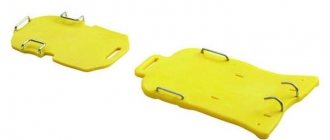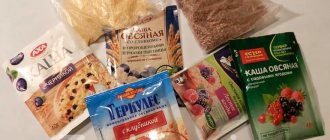Ski tourism is one of the most popular types of active recreation in our country.
Simple walks on ready-made ski tracks, weekend hikes in a snowy forest, multi-day category trips with trails and long-distance expeditions - all these adventures are accessible and a huge number of people are interested in them. Russia has ideal conditions for ski tourism. In most regions there is snow for 5-6 months a year. Skiing is an affordable form of recreation that allows you to cheer up from routine, get positive emotions, see new interesting places and admire snow-covered landscapes.
How to choose equipment to enjoy the stress and comfortably complete the route? What can’t you do without on day hikes and category trips in the mountains and taiga? Of course, in one article it is extremely difficult to tell all the details of preparation for all types of ski trips, therefore, we will focus on the most basic concepts, on the basics, which, of course, beginners need to know first.
Whether it's a walk in the forest or a challenging hike, winter is cold. Low temperatures and piercing winds easily lead to hypothermia and frostbite; snow is a substance that has certain, specific characteristics - which is why it is important to choose the right clothes and equipment.
The choice of equipment for ski tourism depends on:
- the complexity of the route and the nature of natural obstacles;
- individual preferences and experience;
- climatic features of the travel area and weather conditions;
- duration of the trip;
- autonomy of the group.
Shoes and ski bindings
Winter hiking shoes must match your ski bindings, so we're looking at these pieces of equipment together. Warm and reliable shoes help protect your feet in cold weather and prevent frostbite. Closing and waterproof boots with high tops are suitable for winter tourism, in which you can stay in the cold for a long time and do not get snow through the top. In them you can move freely in deep snow and feel comfortable in a bivouac.
For one-day country walks, the FISCHER 2016-17 OFFTRACK 3 boots have proven themselves well. This model is for country walks and simple multi-day ski trips. With integrated gaiters, a taped zipper and a wool lining, the Offtrack 3 boots keep you protected from the cold and snow. The NNN T3 outsole allows the use of standard NNN bindings.
Boot Features:
- Practical loops and a wide boot opening make it easy to put on/take off the boot.
- The protective layer of the lacing prevents the penetration of snow and moisture and protects against the cold.
- Built-in gaiters for protection against snow. Lightweight, water-resistant material and a sealed zipper help keep moisture out.
- A warm lining made of natural wool is able to evaporate moisture without losing its thermal insulation properties.
-10%
athlete price
Ski boots FISCHER 2016-17 offtrack 3
7 490 8 300
Manufacturers position ski boots for hiking as shoes for tourism or backcountry. These shoes have an additional tread on the sole. It is convenient to walk on stones in it, but you need to be careful not to damage the mounting bracket. Hiking boots are comfortable for bivouac, which means you don’t have to take an extra pair of shoes. When choosing the size of a tourist pair of ski boots, be sure to include a pair of warm ski socks, worn on top of each other.
Bindings are chosen depending on the hiking conditions, preferences, type of boots and skis.
For a long time, Russian tourist skiers walked on flat and rough terrain exclusively on cable bindings. They consist of brackets that are installed on the skis and adjusted to the width of the boot, a cable, a bracket - a latch, a spring covering the heel and a strap that secures the boot in the mount. Cable fastenings are convenient and easy to use - you can use almost any shoes and blind shoe covers. If the cable breaks during a hike, it’s easy to get a spare one and continue the route.
The main disadvantage of cable bindings is poor ski control. The braces do not secure the leg well, so it is difficult to traverse the slope and climb using a ladder or herringbone. The boot walks with might and main even when hiking. Cable bindings still have many fans, but their shortcomings have led to many ski enthusiasts gradually switching to more modern types of bindings and increasingly using special ski shoes that integrate with these bindings.
A complete, modern replacement for “cables” are special tourist mounts SNS and NNN, which are designed for hiking. They have a wider platform because they are mounted on wider touring skis and have thicker parts that will better withstand the mechanical wear and tear of hiking and very low temperatures.
The NNN and SNS system mounts have a similar design, but cannot replace each other. NNN has two thin parallel stiffeners. They secure the shoes well and help control the skis, especially on the slopes. SNS mounts have one wide longitudinal stiffener. Boots with SNS soles will not fit NNN bindings and vice versa.
Modern, tourist mounts come in two types: automatic, for example, ATOMIC 2020-21 Prolink auto or SALOMON 2020-21 Prolink Access Classic and mechanical, like Atomic Prolink Access Classic.
athlete price
Ski Bindings ATOMIC 2020-21 prolink auto
2 990
Buy
athlete price
Ski Bindings ATOMIC 2020-21 prolink access cl
2 990
“Automatic” locks itself, as soon as you insert the boot bracket into the groove and press it down to close it, but mechanical fastenings have to be closed manually. The main disadvantage of automatic machines is that they freeze in the cold, become clogged with snow and ice, do not open well and are difficult to use in deep and soft snow. For this reason, automatic bindings are only suitable for weekend trips on smoothed ski tracks with a solid base.
On multi-day trips, conditions are more severe. It is important for a tourist to quickly get on his skis and get rid of them, and not waste time and effort on warming up the binding mechanism and freeing it from ice. Manual fastenings eliminate these problems.
Which mounting system should you prefer: NNN or SNS? It all depends solely and exclusively on which hiking ski boots suit your feet best. That is, the order is as follows - first you try on your boots, and then choose fastenings for them.
Be sure to check with your store to see if the bindings are compatible with your hiking boots!
What are the benefits of skiing?
Skiing is one of the most accessible physical and enjoyable recreational activities. They do not require any special skills. During such walks we receive a powerful charge of positive emotions. Walking through the snowy forest, we not only enjoy the beautiful scenery, but also get a powerful charge of energy and good mood for the upcoming workdays. Our nervous system is strengthened, which promotes normal and restful sleep.
During skiing, the functioning of the cardiovascular and respiratory systems improves, blood circulation improves, the blood is enriched with oxygen, the nutrition of all organs and systems improves, and metabolic processes in the body are activated. And since metabolic processes improve, it means that during such walks there is a chance of losing extra pounds.
Skiing has a powerful effect on the musculoskeletal system, including the spine. During movements when skiing, literally all the muscles of the body are involved, but to a greater extent the muscular-ligamentous apparatus of the upper shoulder girdle and lower extremities. But that is not all. During skiing, the abdominal muscles are tightened (I just know from myself that it is impossible to ski with a loose stomach, it tightens on its own), as well as the muscles of the thighs and buttocks. As a result, your figure becomes ideal.
Soft sliding movements when skiing help strengthen the ligamentous-muscular system in children, and in older people it is an excellent prevention of osteoporosis and maintaining the elasticity of the ligaments.
Skiing is an excellent hardening procedure, which in addition develops our endurance. A walk through the forest gives us the opportunity to inhale the phytoncides of coniferous trees. It is the phytoncides of coniferous trees that help us increase our immunity and avoid colds. The power of phytoncides is great, their volatile substances help stimulate hematopoiesis and the activity of the cardiovascular system, enhance brain biocurrents, relieve headaches and fatigue, improve well-being and mood, and reduce blood sugar levels.
The phytoncides of juniper, pine, spruce, larch, birch, and oak have precisely these actions. In addition, fir phytoncides kill whooping cough bacillus, and pine plants kill tuberculosis bacillus.
Perhaps you don't have any skis. It doesn’t matter, now you can buy them in any store. But how to choose skis for yourself so that you can ski on them comfortably? In our stores, even in large sports supermarkets, salespeople cannot always give qualified advice. Maybe these tips will help you choose skis.
Shoe covers and gaiters
Protecting your feet in winter is never a bad idea. For a long time, ski tourists have successfully used bag-shaped fabric shoe covers. The additional layer prevents snow from getting inside the boot and works like a thermos, protecting your feet from the cold. Such shoe covers are sewn from thin and durable water-repellent fabric and have a height of 15-20 cm above the knee. I put my boot in, tied the shoe covers over the shoes and under the knee, and you can go out on the route. If the fabric prevents you from fastening the fastener, just make a hole in the area of the staple.
Shoe covers help out at a rest stop. They prevent your feet from getting cold and protect you from snow and dirt. For example, Red Fox shoe covers retain heat perfectly and are easy to put on ski boots or warm tunics at a rest stop.
Shoe covers Red Fox shoe covers black
4 500
Buy
Shoe covers are good for cable bindings, but they are not suitable for modern bindings and specialized ski boots. To prevent their feet from freezing and to prevent snow from getting into their boots, ski tourists use gaiters or gaiters.
For winter hiking, the lightweight Sea To Summit 2020-21 Alpine eVent Gaiters Black with Velcro closure are convenient. They are made of membrane fabric, do not get wet and are well ventilated. A good option is the VIKING 2020-21 Pumori Red high leg warmers. Their lower fixing strap is made of steel cable, so it is durable and wear-resistant.
Gaiters Sea To Summit 2020-21 alpine event gaiters black
5 700
Buy
Gaiters VIKING 2021 pumori black/red
2 990
Ski poles
Well-matched poles are important for proper technique. When choosing poles for the classic move, we proceed from the formula: height - 25-30 cm = pole length. Tourist skiers not only lean on poles, but also push with them, so the poles must be long.
For short rides on ready-made trails with a light backpack, high running poles are suitable. In the forest, a long length is inconvenient; it is better to take poles no higher than the shoulder. For a difficult ski trip, choose poles with a reserve. Long journeys take place off the beaten path, so take your poles up to your shoulders, as they will be partially buried under the snow.
Sticks are made from different materials. Fiberglass is inexpensive, but cannot withstand heavy bending loads and intense repulsions. Fiberglass poles break easily and are only suitable for simple walks and one-day, very simple ski trips. For weekend routes, SPINE 2020-21 Cross 100% Fiberglass or STC ASTRO poles are good.
-34%
Ski Poles STC astro blue
390 590
Buy
On multi-day hikes, they most often take durable, cheap and slightly heavy aluminum alloy poles, which are very difficult to break. If a pole gets bent along the route, it is easy to straighten it and continue the hike. A good choice for travel is the Marpetti 2018-19 and KOMPERDELL 2016-17 Nordic Adventure VARIO poles.
-29%
Ski Poles Marpetti 2018-19 aluminum
490 690
Buy
Ski Poles KOMPERDELL nordic adventure vario
2 990
The material, weight and shape of the handle are also quite important. For ski touring, it is better if the top part of the pole is light and easy to grip. Nowadays, handles made not of plastic or rubber, but of cork, are popular. They are famous for their excellent adhesion and low thermal conductivity.
Anatomical lanyards that tightly cover the skier's hand create reliable support when pushing off.
When choosing hiking poles, pay attention to the feet at the end of the skis. For ski tourism, wide feet with a large area are suitable, otherwise the poles will sink deep into the soft snow. It is better if the tips or rings are removable, then they can be replaced on the route.
Many tourists go hiking not with ski poles, but with long ski poles or telescopic poles. The last solution is very convenient - the pole can be adjusted in height, made shorter when climbing a mountain, and longer on flat terrain. Changing the length is useful because it allows you to relieve tired muscles. If you want to take telescopic poles on a winter hike, choose ones with eccentric clamps. Collet clamps work worse in cold weather, because... unfold in deep snow.
Two-knee poles are more practical than 3-4-knee poles. When pushing off, they spring less. Cober Anapurna 2 trekking poles are very comfortable.
How to choose the right size touring skis?
Yes, yes, skis are a special piece of equipment: unlike tents, compasses and backpacks, they are selected taking into account the individual parameters of the tourist. So what “formulas” do experienced athletes use to select their skis?
Option one
and the most common
.
It is believed that the length of the skis should be equal to the height of a person, and the poles should reach his armpits.
Option two
, and, according to online reviews, more current. It is necessary to add 10-15 centimeters to the athlete’s height, and the resulting amount will be equal to the required ski length. They say that such skis are more convenient to control on ups and downs than those that are selected in full accordance with height.
As for the poles, you can’t do without an “extra” here either - unlike skiing on the beaten track, tourist routes go along snow-covered roads, which means there is a high probability that the poles will partially “sink” under the snow. Therefore, be guided by the fact that the ski poles reach your shoulder - and you will not be mistaken.
Cloth
During active skiing, a person sweats, so it is important that clothes are not only warm and light. She should breathe and not restrict her movements. Multi-layered equipment is good for hiking trips. The bottom layer - thermal underwear retains heat and wicks away moisture.
The middle one - a fleece jacket and pants - keeps you warm, and the top one - a warm or windproof jacket, trousers or overalls protects from wind and snow. In extreme cold and in bivouacs, tourists wear insulated jackets.
All ski jackets are insulated at Kant.
For windless and moderately frosty days, a light ski hat is suitable. When it's cold and windy, a balaclava or BUFF with a warm and thick fleece strip will help out.
Mask (Balaclava) Accapi 2020-21 balaclava black
2 390
Buy
Mask (balaclava) Buff POLAR BALACLAVA BUFF SOLIDLID NAVY-NAVY-Standard/OD
2 290
Buy
An important accessory for ski tourism is gloves and mittens. It is better to have both on the route. Gloves are fleece, with fleece thickness, depending on the weather conditions in which you plan to perform feats. It is more convenient to take photographs, pack a backpack and fasten fastenings with gloves, and the mittens provide excellent warmth in cold weather. Gloves and mittens get wet quickly, both from snow and sweat, so take a spare set with you.
For wind protection, it is good if the gloves have Windstopper and the mittens have insulation.
To prevent the fabric from fraying from ski poles, it is advisable to have leather pads on the palms. Long mittens that completely cover the wrist are more practical than short ones. They must be tightened so that snow does not get inside, and your hands do not freeze from the wind.
Socks for ski tourism are made entirely of synthetic or with the addition of wool. The principle of layering is also relevant for feet, so thin and warm socks are used when hiking in the winter.
Clothing for one-day ski trips and for difficult hikes is different. If you are going on a weekend route without overnight stays, you can get by with a minimum of things. Put spare warm and thin socks, replacement mittens and a jacket for breaks in your backpack. On a long hike you have to take a lot of equipment. You need spare thermal underwear for changing clothes, an additional set of thermal underwear for sleeping, replacement sets of socks and mittens, a hat with a Windstopper and much more.
A large and detailed article about the correct choice of clothes for cross-country skiing
Backpack
When choosing a backpack for a ski trip, pay attention to its volume and convenience. The backpack should be roomy enough. For one-day ski trips, tourist backpacks with a capacity of 30-50 liters are suitable.
On an overnight ski trip you have to take a lot of bulky equipment, so take a backpack with a volume of 100–130 liters for men and 90–100 liters for women.
Why is it important to choose the right skis for different types of skiing?
There are two types of skiing in skiing: skating and classic. A separate type of ski is selected for each type. Additionally, pay attention to your height, ski length, stiffness, and boot size.
The classic move is characterized by:
- Skis sliding parallel to each other;
- Pushing off the snow with feet and hand sticks;
- The movement is relatively simple, making the method easy for a beginner to master.
A variation of the classic move is double polling. The riding style involves pushing only with your hands, which puts a lot of stress on your core, shoulders and forearms. The method is suitable for those who have poor balance, but are physically well developed.
The skating running style is distinguished by increased skating speed, but is more energy-consuming and more difficult for beginners due to its high technicality. The legs change alternately, as when walking on regular ice skates.
Sleigh-drag
On long winter hikes you usually take more things than on summer hikes: it’s cold, you need to move more actively, therefore, in addition to backpacks, if conditions and terrain allow, they take drag sleighs. They carry the heaviest and most voluminous cargo. The more gear you have, the more likely you should have a drag sled.
With some skill, pulling a sled is much easier than carrying a weight on your back. Due to the redistribution of the load, group members are less tired. Dragging trucks are convenient for bivouac - for transporting firewood, snow blocks for windproof walls and ice for water. It is comfortable to sit on the sleigh during breaks. Volokushi are good on open tundra, dense snow and ice, but slow down in the forest, on steep banks and when traversing slopes.
